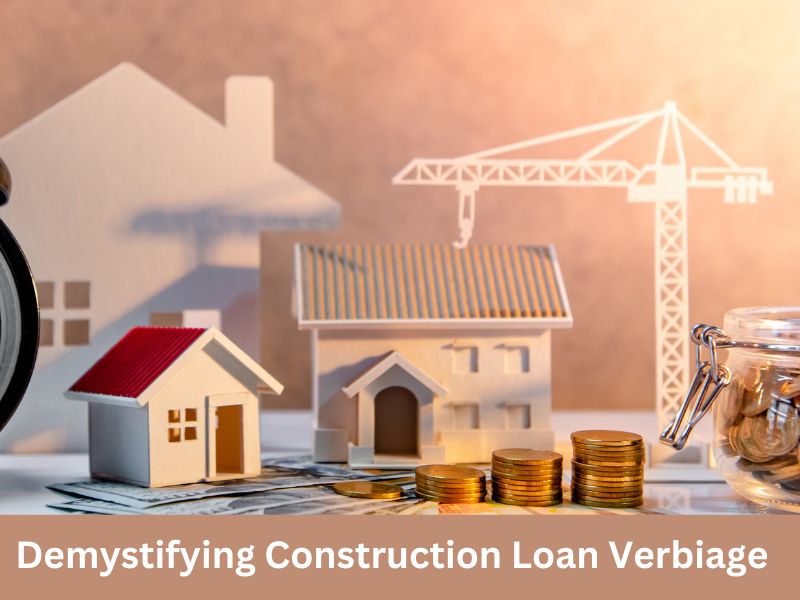When it comes to building a physical structure, the foundation isn’t the only critical element. There’s another foundation that’s equally crucial, albeit less tangible: the financial groundwork. Construction projects often rely on a specific type of financial support known as a construction loan. Within the realm of these loans lies a web of terminology and verbiage that can be as complex as the structures they fund. Understanding this language is vital for anyone venturing into the realm of construction financing.
The Basic
A construction loan is a short-term loan that provides the funds necessary to finance the building or renovation of a property. Unlike a traditional mortgage where the full loan amount is given upfront, a construction loan is typically disbursed in stages as the project progresses. This staggered disbursement, often termed as ‘draws,’ is a distinctive feature of these loans.
Navigating the Verbiage
Navigating the landscape of construction loan verbiage involves familiarizing oneself with several key terms:
Draws: These are the periodic payments made by the lender to the borrower or directly to the contractor as the project reaches specific milestones or completion stages.
Interest Reserves: A portion of the loan amount set aside to cover the interest payments during the construction phase. This reserve ensures that the borrower isn’t making monthly interest payments out of pocket while the property is under construction.
Loan-to-Value (LTV) Ratio: This ratio compares the loan amount to the appraised value of the property. It helps determine the risk for the lender and influences the terms of the loan.
Contingency Funds: Funds set aside to cover unexpected costs that might arise during construction, such as material price fluctuations or unforeseen construction challenges.
Completion Guarantee: A commitment from the borrower or a third party ensuring that the project will be completed as agreed upon, providing reassurance to the lender.
Construction Loan Agreement: The document outlining the terms and conditions of the loan, including details about disbursements, timelines, interest rates, and responsibilities of both the borrower and the lender.
The Significance
Understanding this verbiage is crucial for various stakeholders involved in the construction process:
Borrowers: Clarity in loan terms and language empowers borrowers to make informed decisions, effectively manage the construction process, and avoid potential pitfalls.
Lenders: A comprehensive understanding of construction loan terminology enables lenders to mitigate risks and ensure that the loan is structured in a way that aligns with the borrower’s project and financial capacity.
Contractors and Developers: Familiarity with these terms aids in managing expectations, budgeting effectively, and ensuring a smoother construction process.
Construction loan verbiage might seem like a labyrinth at first glance, but understanding these terms is fundamental in successfully navigating the financial aspect of a construction project. It’s the common language that bridges the gap between vision and reality, ensuring that projects are not just built on solid ground but also on a secure financial foundation.
Whether you’re a borrower embarking on a dream construction project or a lender facilitating these endeavors, grasping the language of construction loans can be the difference between a smoothly executed build and a financial headache. So, take the time to understand this financial terminology, and you’ll pave the way for a more informed, confident, and successful construction journey.
Understanding construction loan verbiage is similar to laying a strong groundwork—a necessary precursor to constructing dreams into reality.






